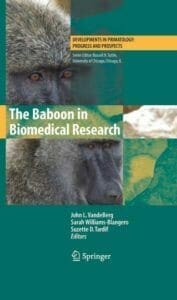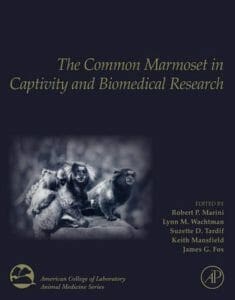Chapter 1. History of the Use of Nonhuman Primates in Biomedical Research
Human and Nonhuman Primates to 1960
Establishment of the National Institutes of Health’s National Primate Research Centers Program in the USA: Crossing the Threshold
1960–1980: Period of Growth in a World of Increasing Constraints
1980S and 1990S: Progress Paying off in the Face of Serious Challenges
Primate Research Beyond the Year 2000
Looking Toward the Future
Chapter 2. Laws, Regulations and Policies Relating to the Care and Use of Nonhuman Primates in Biomedical Research
Introduction
National Laws on Use of Nonhuman Primates in Biomedical Research
Nonlegislative Initiatives that Affect the Care and Use of Nonhuman Primates
Good Laboratory and Manufacturing Practice
Human and Animal Disease Control
Species Conservation
Transport
Health and Safety
Appendix 1
Chapter 3. Taxonomy of Nonhuman Primates Used in Biomedical Research
Introduction
Biomedically Relevant Primate Species
The Old World Primates
The New World Primates
From Phylogenetics to Phylogenomics
Acknowledgment
Chapter 4. Functional Morphology
Introduction
Morphological Definition of Primate Order
Sexual Dimorphism
Growth and Development
Body Size and Integument
Head and Neck Morphology
Back and Spine Morphology
Limb Morphology
Thoracic Morphology
Abdominal and Pelvic Morphology
Perineal Morphology
Conclusions
Acknowledgments
Selected Readings
Chapter 5. Study of Nonhuman Primate Social Behavior
Introduction
Levels of Behavioral Analysis
Definition of Nonhuman Primate Societies
General Statement on Nonhuman Primate Social Structures
Methodologies used to Study Behavior
Behavior Research to Colony Management
Conclusions
Chapter 6. Behavioral Management, Enrichment, and Psychological Well-being of Laboratory Nonhuman Primates
Introduction
Definitions of Terms
Why Perform Behavioral Management?
Managing Behavior
Environmental Enrichment Plans
Positive Reinforcement Training
Balancing Psychological Well-Being and Research Needs
Managing Behavioral Management Programs
Conclusions
Acknowledgments
Chapter 7. Behavioral Disorders of Nonhuman Primates
Introduction
Etiology of Psychological Disorders
Therapeutic Strategies for Reversing Psychopathology
A Practical Guide to Managing Abnormal Behavior in the Laboratory
Summary
Acknowledgments
Chapter 8. Reproduction and Breeding of Nonhuman Primates
Basic Reproductive Biology
Housing, Husbandry, and Population Management for Breeding
Pregnancy Management
Nonhuman Primates from Foreign Breeding Programs
Chapter 9. Laboratory Housing of Nonhuman Primates
Introduction
Primary Housing Design for Individuals, Pairs, or Small Groups
Group Enclosures
Security
Conclusion
Acknowledgments
Chapter 10. Nutrient Requirements and Dietary Husbandry Principles for Captive Nonhuman Primates
Introduction
Primate Nutrient Requirements
Considerations for Feeding Protocols
Chapter 11. Animal Identification and Record Keeping for Nonhuman Primates
Introduction
Animal Identification
Record Keeping
Data and Database Format
Reports and Analyses
Summary
Acknowledgments
Chapter 12. Preventative Medicine in Nonhuman Primates
Introduction
Occupational Health and Safety
Quarantine
Husbandry Measures Contributing to Preventive Health
Disease Surveillance
Animal Vaccination Program
Chapter 13. Clinical Techniques used for Nonhuman Primates
Introduction
Handling
Digestive System
Urinary System
Respiratory System
Reproductive System
Circulatory System
Central Nervous System
Musculoskeletal System
Integumentary System
Body Cavities
Chapter 14. Surgery in Nonhuman Primates
Introduction
Nonclinical Concerns
General Principles of Experimental Surgery
Chapter 15. Emergency Medicine and Critical Care for Nonhuman Primates
Introduction
General
Emergencies and Diseases Common to Nonhuman Primates Requiring Critical Care
Chapter 16. Xenotransplantation
Introduction
History
Pathobiology of Pig-To-Primate Organ Transplantation
The Pig-to-Nonhuman Primate Model
Results and Complications
Genetic Modification of Pigs
Summary
Acknowledgments
Chapter 17. Anesthesia and Analgesia in Nonhuman Primates
Introduction
Preanesthetic Considerations
Selecting an Anesthetic Regime
Anesthetic Management and Monitoring
Dealing with Emergencies
Special Considerations
Postanesthetic Care
Analgesia
Chapter 18. Biosafety in Laboratories using Nonhuman Primates
General Biosafety Considerations
Disease Prevention
Facilities Management
Equipment
Personnel Management
Veterinary Care, Animal Health, and Husbandry Practices
Zoonoses, Biohazards, and Other Health Risks
Viral Diseases
Bacterial Diseases
Spirochetal Diseases
Mycoplasmal Diseases
Rickettsial Diseases
Chlamydial Diseases
Mycotic Diseases
Parasitic Diseases
Model Occupational Health Program for Persons Working with Nonhuman Primates
Participants
Components
Records
Health Services/Personnel
Acknowledgments
Chapter 19. Safety and Efficacy Evaluation Using Nonhuman Primates
History and Regulation of Primate Testing
Nonhuman Primate Models of Safety Assessment
Efficacy Studies in the Nonhuman Primate
Index














![Ettinger’s Textbook of Veterinary Internal Medicine 9th Edition [PDF+Videos] Ettinger’s Textbook of Veterinary Internal Medicine 9th Edition [True PDF+Videos]](https://www.vet-ebooks.com/wp-content/uploads/2024/10/ettingers-textbook-of-veterinary-internal-medicine-9th-edition-100x70.jpg)

![Textbook of Veterinary Diagnostic Radiology 8th Edition [PDF+Videos+Quizzes] Thrall’s Textbook of Veterinary Diagnostic Radiology, 8th edition PDF](https://www.vet-ebooks.com/wp-content/uploads/2019/09/textbook-of-veterinary-diagnostic-radiology-8th-edition-100x70.jpg)






